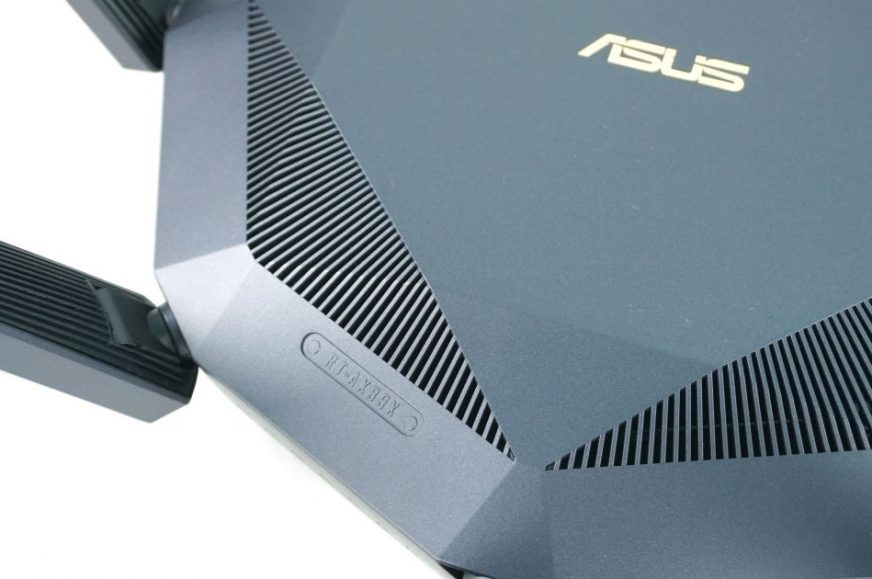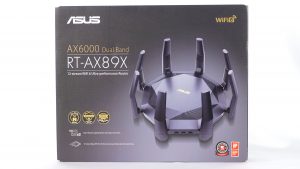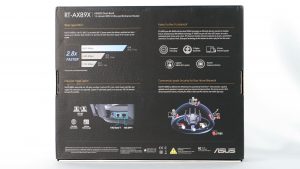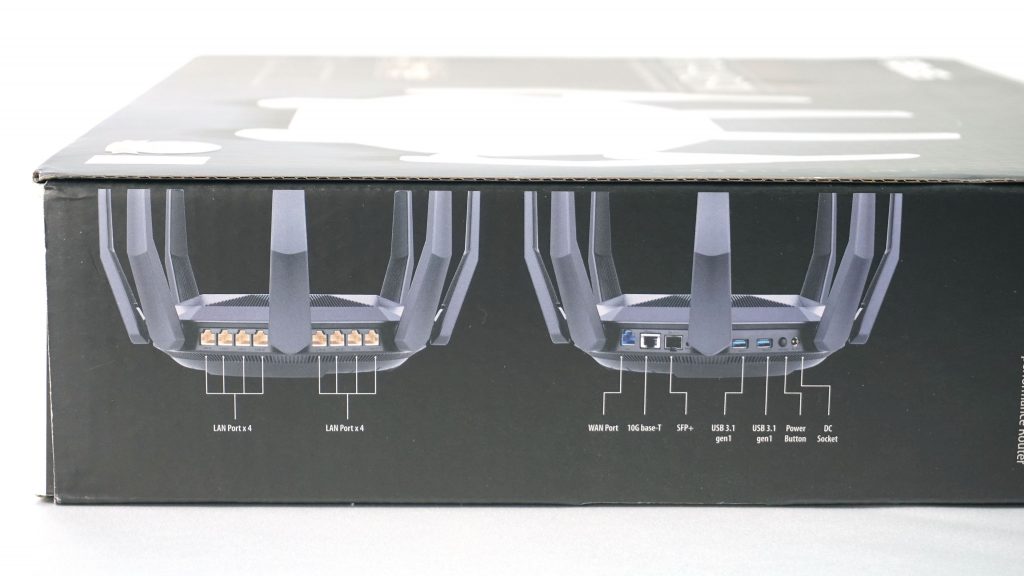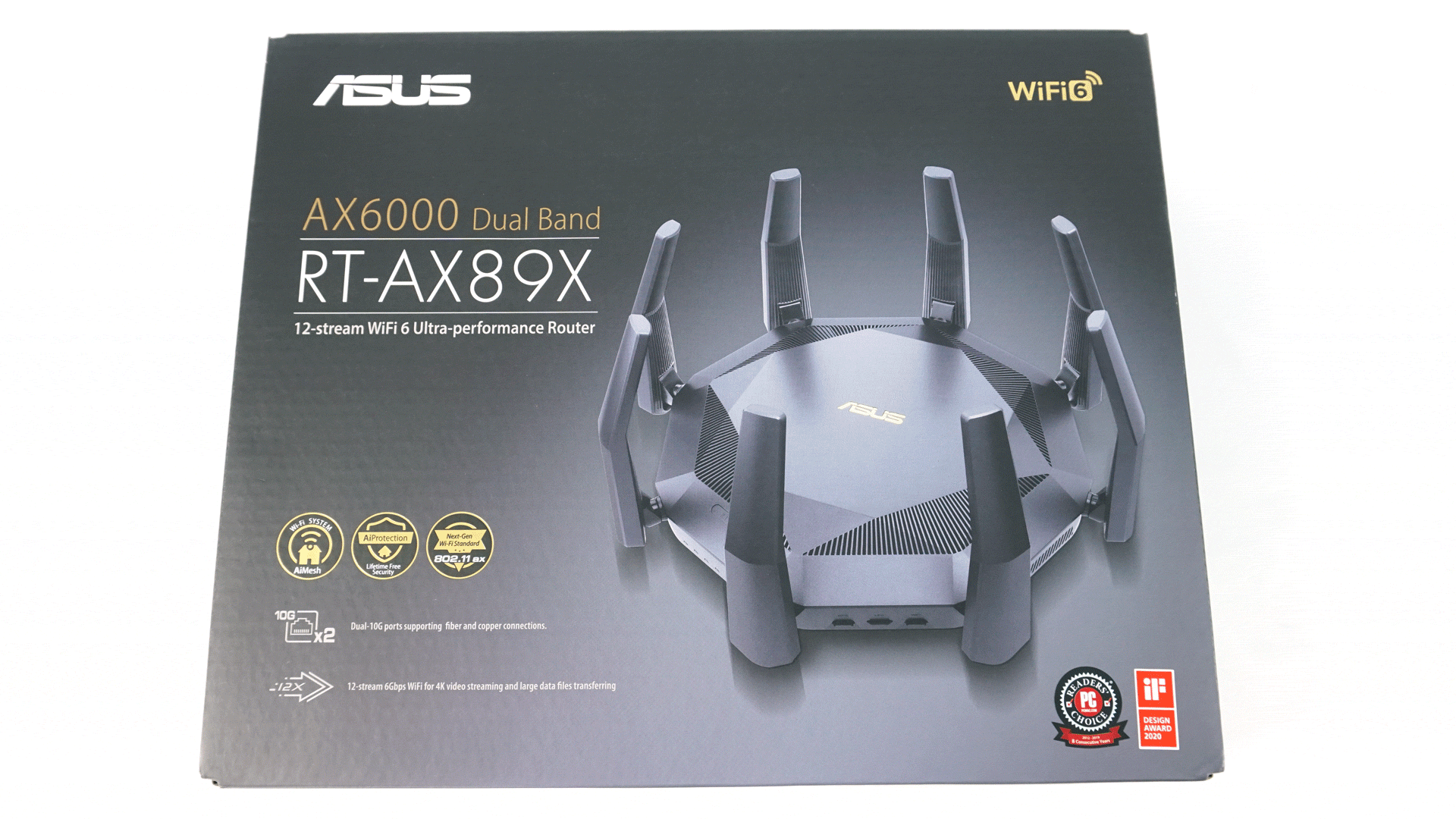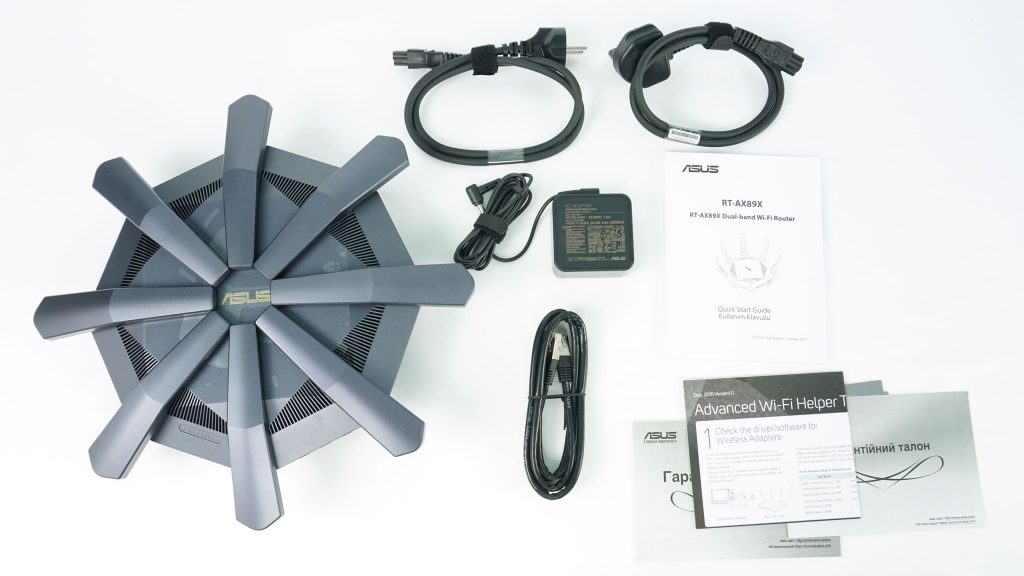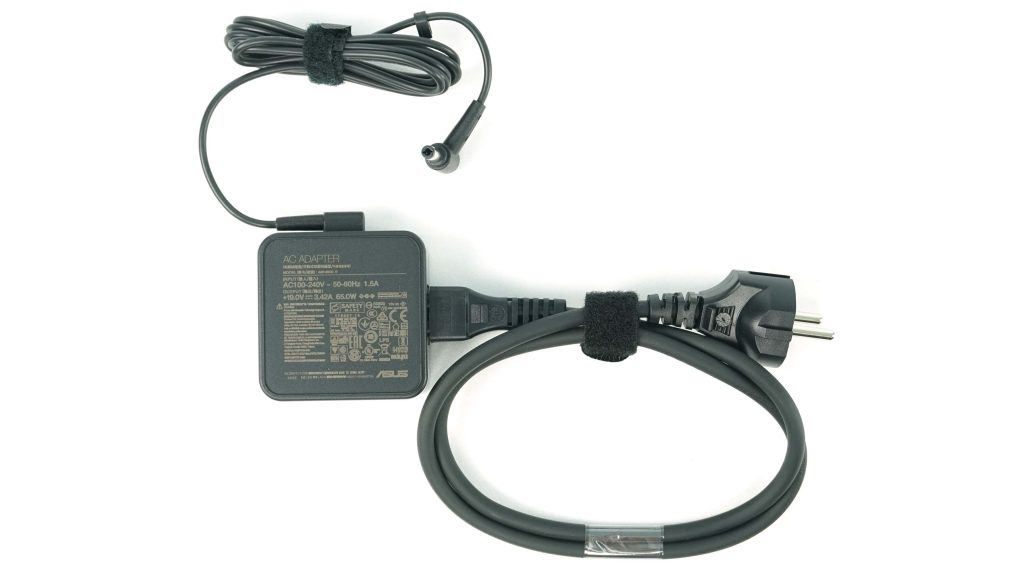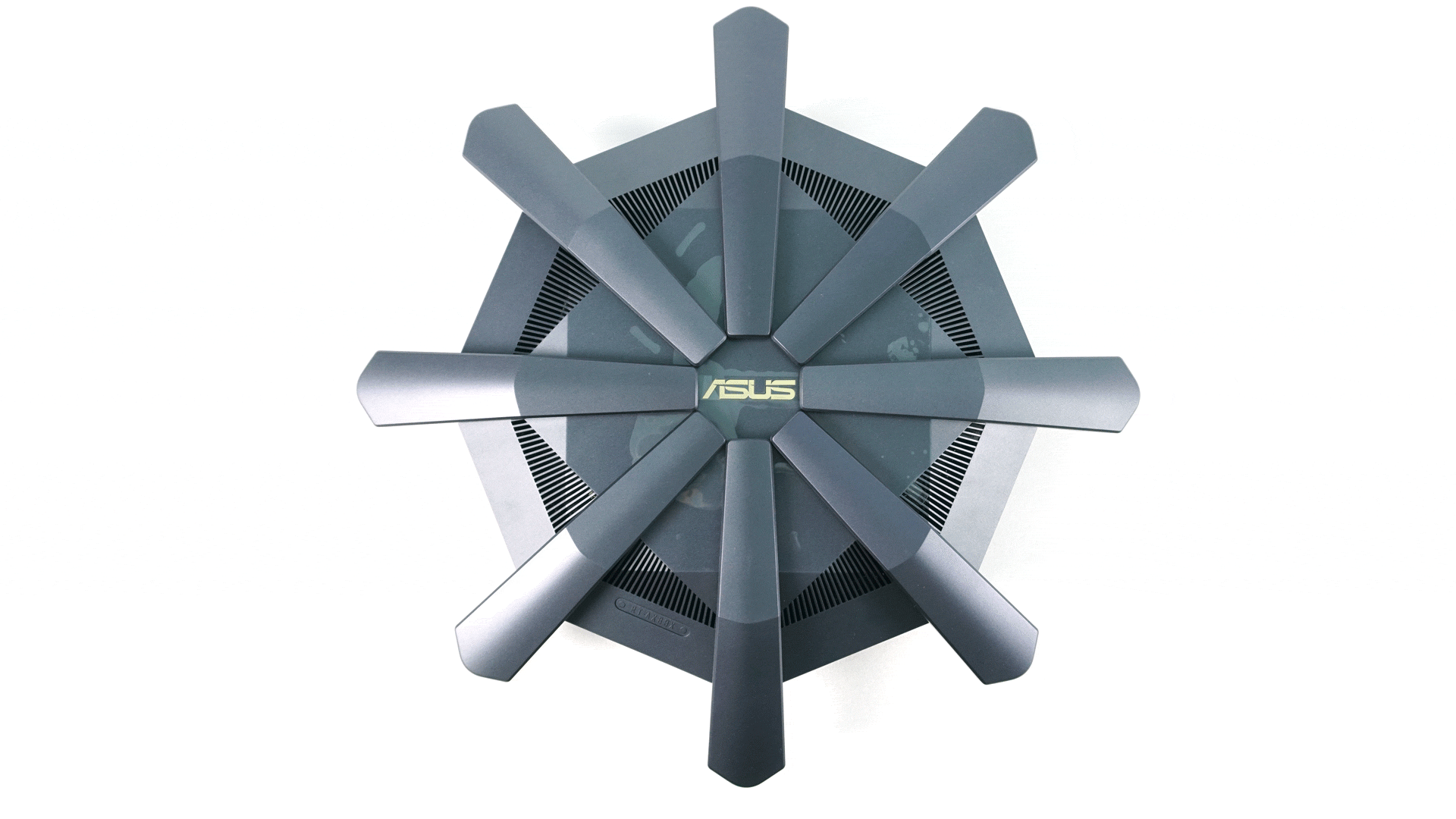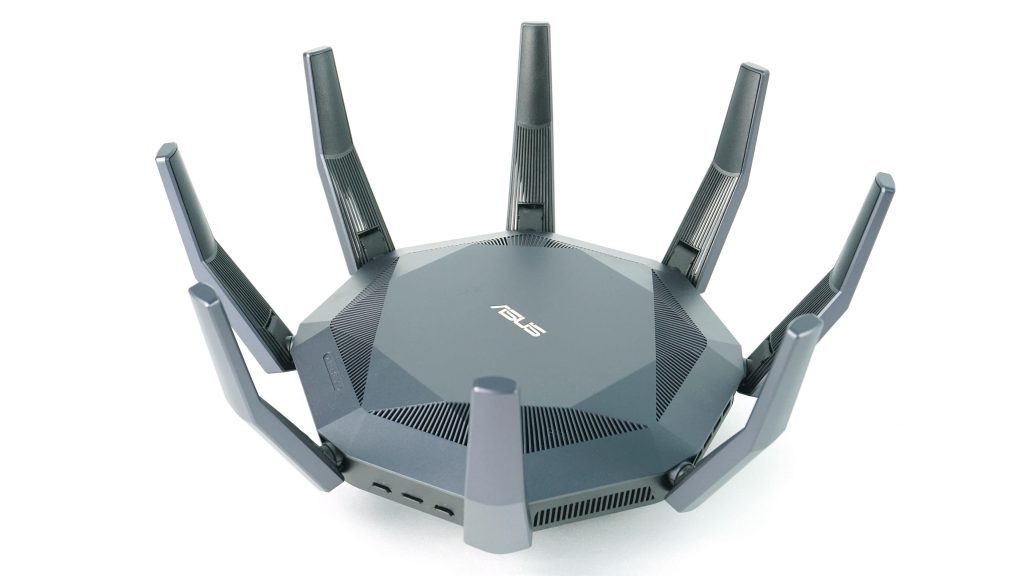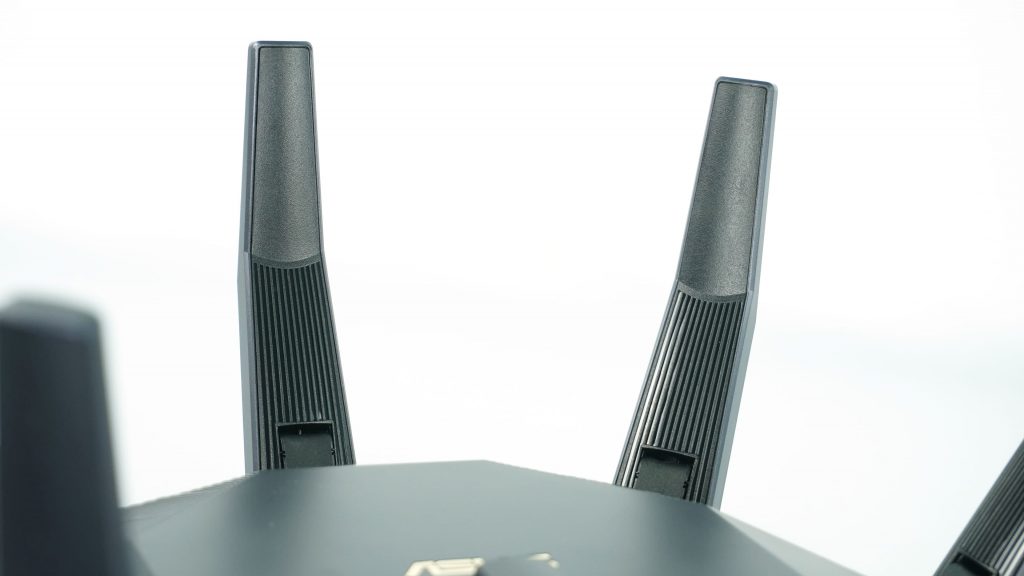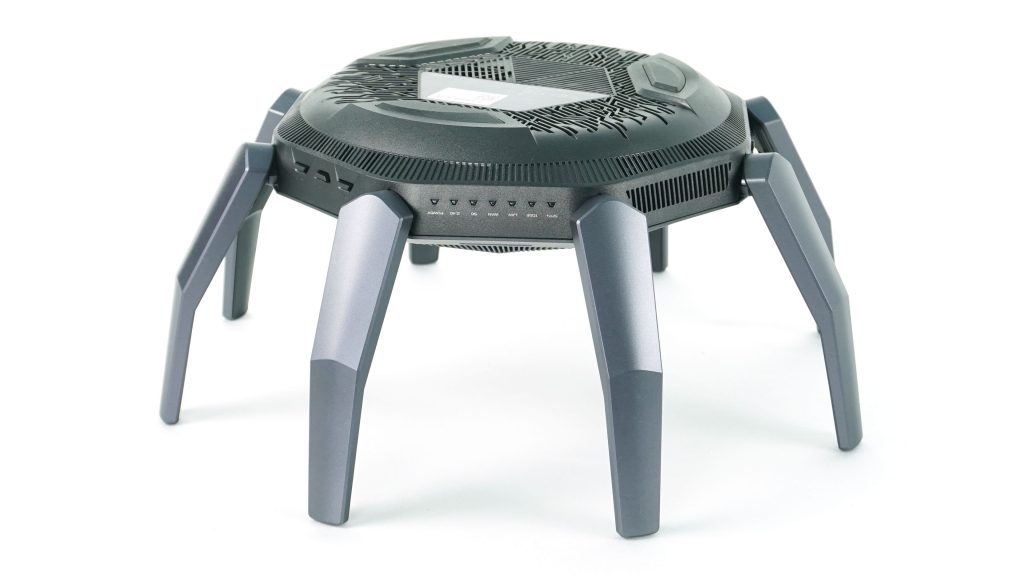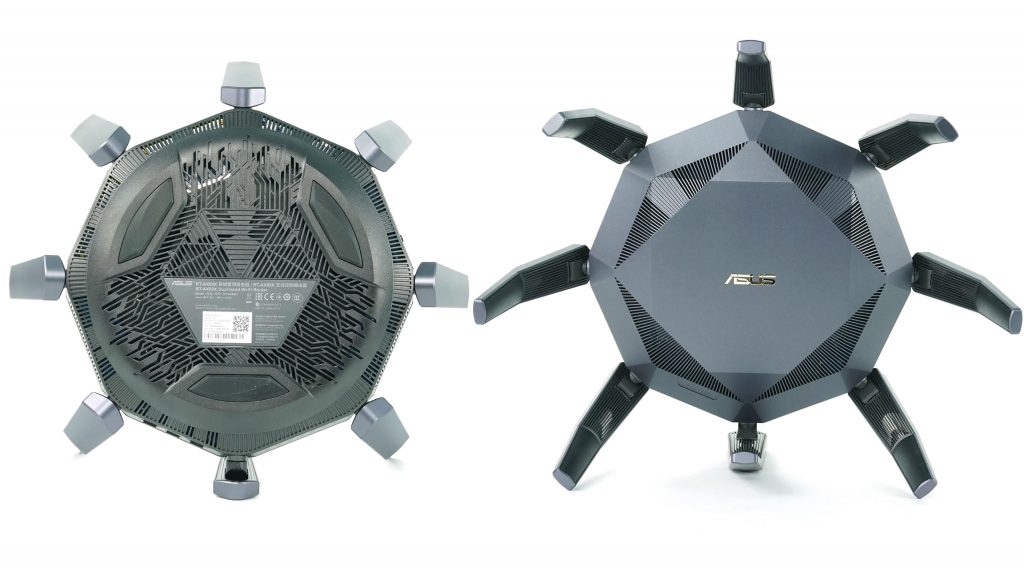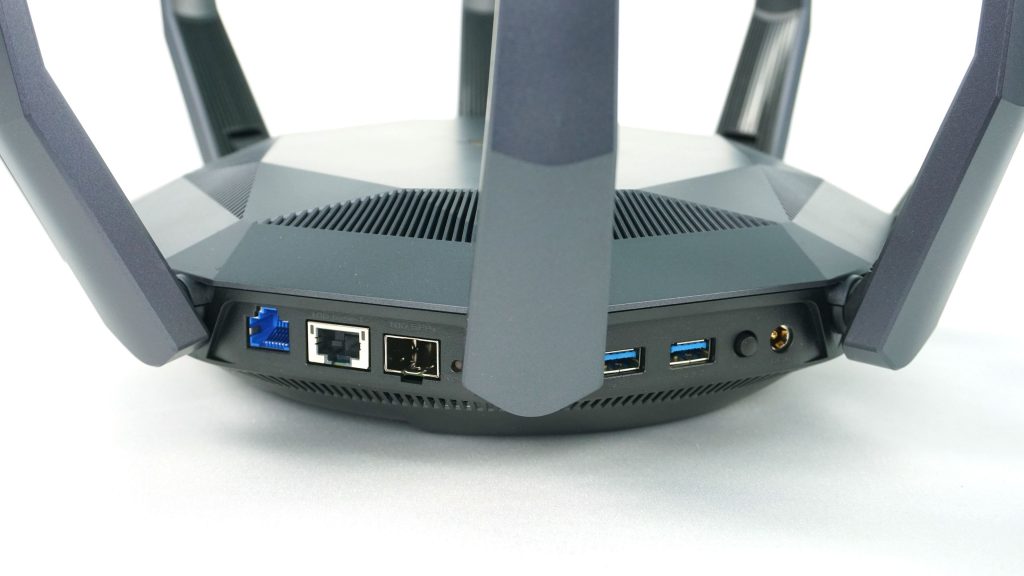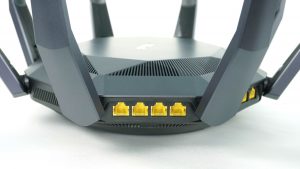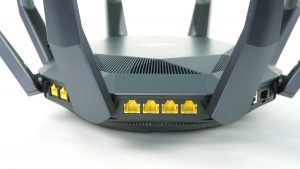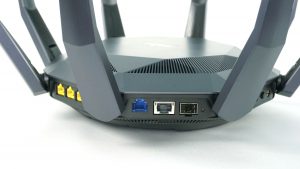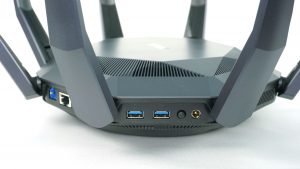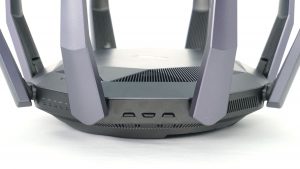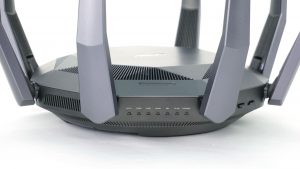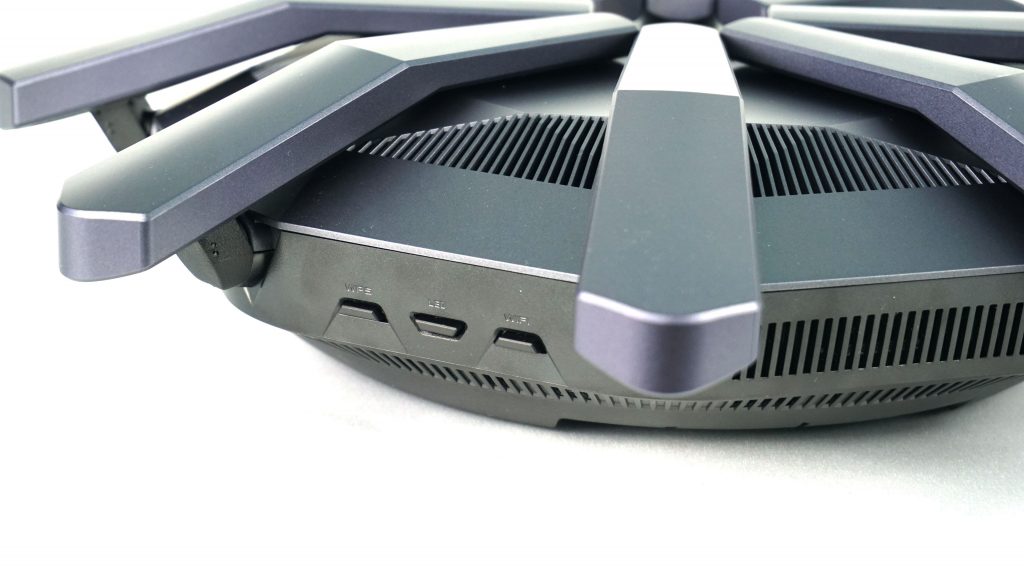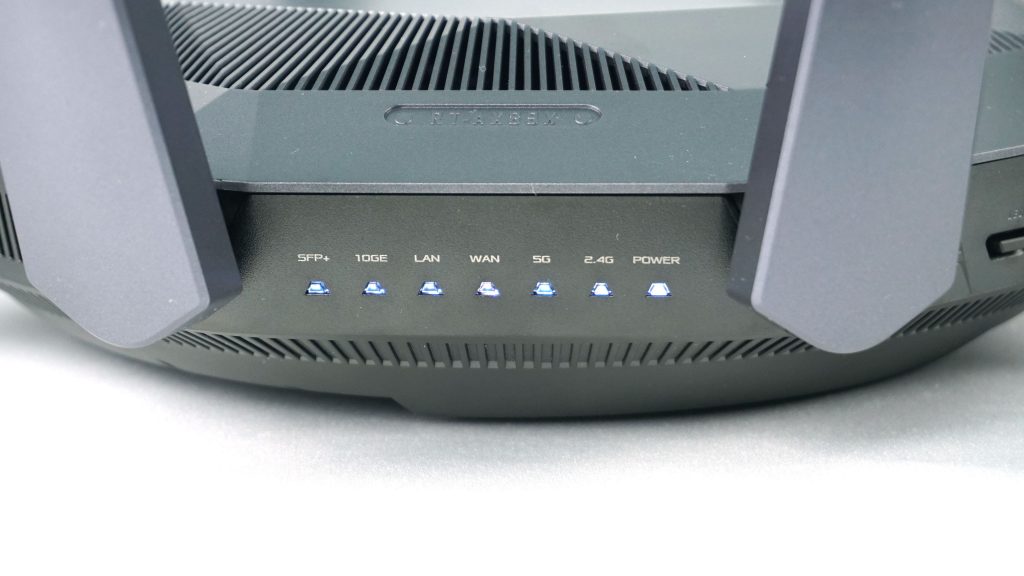Package and specifications
We only test routers rarely, usually if they bring any significant news. The last time, for example, it was an Asus router with WiFi 6. The first home router with a 10-gigabit connection is now coming to the market from the same manufacturer, using RJ45 and SFP+. The slow 1 Gbps cable connection was the drawback of WiFi 6 routers, and this is what the new RT-AX89X eliminates. Thanks to 10 Gb connectors, the home network is thus entering a new era.
Basic information
| Parameters | Asus |
| RT-AX89X | |
| Operating Frequency | 2,4 GHz 4×4 + 5 GHz 8×8 |
| Chipset (Broadcom) | IPQ8074, 4C ARM Cortex A53, 14 nm, 2.2 GHz (SoC) + 2× QCN5054 (5GHz WiFi) + QCN5024 (2,4 GHz WiFi) + QCA8337 (GbE Switch) + Aquantia AQR107 (10 GbE Switch) |
| Network standards IEEE 802.11 | ax/ac/n/b/a/g |
| Atenna | 8× external |
| RAM | 1 GB DDR3 |
| Internal storage (flash) | 256 MB |
| Encryption | 64/128-bit WEP, WPA/WPA2/WPA3-PSK, WPA/WPA2-Enterprise |
| Sharing | 3G/4G, HDD, Samba, server FTP and print server |
| Network ports | 9× RJ-45 s 1 Gb/s (8× LAN + 1× WAN), 1× RJ-45 s 10 Gb/s, 1x SFP+ s 10 Gb/s |
| USB ports | 2× USB 3.1 gen 1 |
| Buttons | power, LED, Wi-Fi, reset, WPS |
| Dimensions | 270 × 270 × 70 mm |
| Weight | 1252 g |
| Approximate price | 500 eur |
Package and exterior
The packaging design is similar to the manufacturer’s previous routers. In its graphics you can see the router itself as well as its main features and a few specs.
On the side, all its ports and connectors are shown, which we will, of course, also investigate later.
Inside you will find the router itself, a LAN cable, a power adapter with two connectors and documentation, as usual.
It is interesting that there is a change in the power adapter compared to its predecessors. So far, you would find a 45 W power adapter with Asus routers, but the novelty got a more powerful 65 W one.
Unlike its siblings, the Asus RT-AX89X has built-in antennas that fold inwards. The design is also a bit more neat, as the distinctive red or gold elements that adorned the predecessors have disappeared.
Thus, after unfolding, the antennas point in all directions in a symmetrical arrangement. It is also worth mentioning the fact that, compared to its predecessors, the number of antennas is double, i.e. 8 instead of 4.
When looking at the antenna, you can see the joint and the knurled lower half.
Foldable antennas allow you to place the router in such an entertaining pose, where it resembles a crab.
A big portion of the lower and upper part’s surface is perforated, intended for cooling the router. For the first time, we can also see active cooling here – a fan whose speed you can regulate via the software.
Let’s move on to the port selection. Due to the fact that the router is no longer of a rectangular in shape, but oval, or rather octagonal, the ports are scattered on several sides among the individual antennas. You get three pairs, i.e. six sides with ports and the other two are for ventilation.
Specifically, we see eight 1 Gbps yellow RJ45 connectors, similar to the AX88U and AC88U. 8 RJ45 connectors is one of the advantages of these higher models of Asus routers, as common models offer only 4.
Other network ports are as follows – 1 Gbps WAN port and two 10 Gbps connectors in the form of an RJ45 and SFP+ connector. There is also a pair of USB 3.0 ports and a power button next to the power connector. You could already see a pair of USB ports with the predecessors, but the 3.0 version was only present on the RT-AX88U, while the older AC88U had one of the two USB ports only in the 2.0 standard.
Last two sides left, you will find three buttons and 7 LED indicators there.
The buttons are classic as always, namely WPS for quick pairing, and LED and WiFi for turning these functions on/off. You can quickly and easily turn off the annoying flashing of the status lights or cause a home apocalypse by turning off wireless networks.
The LED indicators show whether the router is switched on, whether WiFi is switched on in the 2.4 and 5 GHz bands, connected WAN and LAN, as well as 10 Gb connectors. You can easily figure out possible problems when configuring a new network, but then it is wise to turn off the LEDs so that they do not disturb you at night.
As you could see from the comparison of the AX89X with previous models, the change in shape did not significantly affect the already large dimensions. This also applies to its weight, which in this case is 1,252 grams (2.76 lb). The predecessors weighed around or just over 1 kg (2.2 lb), so the novelty gained about a fifth of the weight. In terms of equipment, the AX89X has much in common with the AX88U, such as 256 MB of Flash and 1 GB of RAM. But the chipset changed completely, from Broadcom to Qualcomm. The novelty has a faster 2.2 GHz SOC and also an improved MU-MIMO 5 GHz network, which now supports 8 × 8 connection.
The theoretical bandwidth of the AX89X is up to 6000 Mb/s, which is the same value as for the AX88U, so there is no significant improvement in wireless network. There are also WiFi 6 features such as OFDMA, or security via the newer WPA3, which you will also find on the predecessor. We will mention other functions in the web GUI overview.
- Contents
- Package and specifications
- 10 Gbps network – pitfalls and solutions
- Software – General settings
- Software – Advanced settings
- Test methodology
- Test results
- Conclusion





